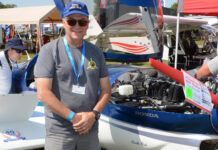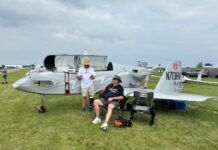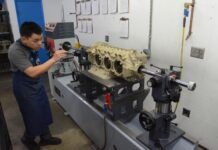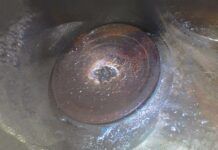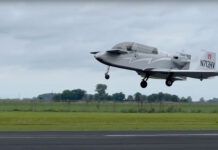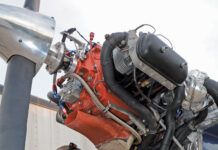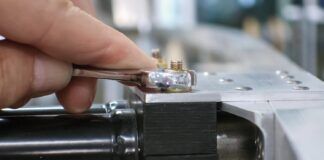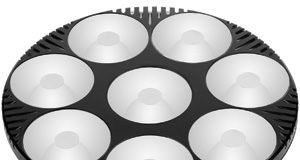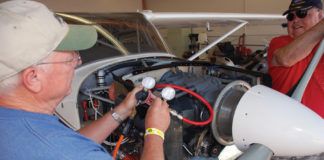As a builder, you will have installed and removed your airplane’s propeller-assuming you’re not building a jet, of course-several times before first flight. And yet you should not let this passing familiarity lull you into thinking you know everything there is to know about mounting a prop. A propeller is one of those killer items, like an engine crankshaft or wing mainspar—and it needs to be installed correctly.
Which might beg the question: How hard can the installation be? Well, that depends on how you define hard. First off, never install a propeller-wood, aluminum, composite or steel-without referring to and understanding the complete set of installation instructions and procedures from the prop manufacturer. All good prop manufacturers provide a lot of information, hints and tips; it’s in their best interest to do so. If you didn’t get paperwork, your first step is to call the manufacturer and get it. Never assume.
Prop and Engine Matching
Also never assume that just because a prop bolt pattern fits the bolt pattern of the crankshaft flange, the propeller and engine will fly well together into the wild blue yonder. Reciprocating piston engines generate vibration due to torque fluctuations. These forces generate torsion (twisting force) thats applied to the crankshaft. More than a few engines are restricted from operating in certain rpm ranges because a given engine/propeller hub and blade combination generate resonant vibrations that create dynamic stresses in the crankshaft. Generally speaking, vibration issues crop up for metal (fixed-pitch or constant-speed) props on engines with non-counterweighted crankshafts. (Crankshaft counterweights are used on some cranks to help reduce transmitted vibration.) Typically, wood or composite props are indifferent to vibration issues, if not totally immune.
Where do you find information on engine/prop compatibility? Its listed under the propeller manufacturer’s name in the propeller type certificate data sheet (TCDS) at http://rgl.faa.gov/. Determinations must include both the prop hub type and the blade part number. Go to the propeller TCDS library to find out if a prop can be installed on your engine and whether there are any rpm restrictions on your particular prop/engine combination. Remember that just because someone else has mated a certain prop to a particular engine-a combination not on the TCDS listing-and has flown successfully, that doesn’t make it right. There are very good reasons why some props don’t get along with certain engines.
Installation Considerations
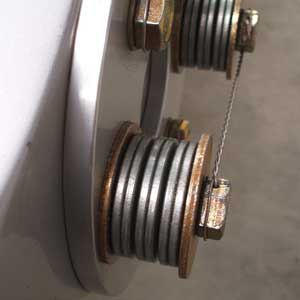
So let’s talk about the actual installation. Prior to propeller installation the engine crankshaft flange and the propeller mating flange must be clean, smooth and dry. Rotation is transmitted to metal props through dowel pins and bolts that are tightened to just short of bolt yield strength. Installation consists of determining the proper orientation of the prop to the crankshaft, tightening the bolts or nuts to the specified torque and safetying the hardware to maintain that torque. Sometimes an excessive vibration requires that a prop be removed and reinstalled after rotating it 180. In most Lycomings, two of the six dowels are recessed to mate with a single relief in the prop hub, thereby allowing the prop to be mounted one of two ways. Typically, the orientation doesn’t matter, but if you’ve had the prop balanced to the engine, be sure to mark the orientation so you can repeat it during reassembly.
Wood Chips
High-tech natural composite props (er, wood) are another story. Rotation is transmitted to a wood prop by friction between the prop flange and the engine crankshaft flange. It’s important to smooth out and polish any bumps, nicks or deformities in both the wood prop flange and the crankshaft flange to ensure maximum contact. Sensenich recommends that the two flanges be wiped with denatured alcohol after polishing with a ScotchBrite pad.
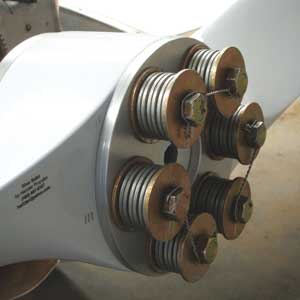
Wood props are soft, have low crush strength, low stiffness and are susceptible to expansion and contraction due to atmospheric changes such as humidity and precipitation, so maintaining the proper torque requires regular attention. A wood propeller that is properly installed and torqued in accordance with the manufacturers specifications at a humid location will lose torque and may move in relation to the crankcase flange due to low contact pressures after the airplane is moved to a very dry climate. This environmental variable is why every wood propeller manufacturer requires that prop torque be checked at least twice following the initial installation and then at every annual or at 50-hour intervals.
To check torque the prop bolts must be loosened slightly before the prop is re-torqued or an improper torque reading will result. Some people reject wood props because of this, but wood props have a lot to recommend them. They’re much lighter than metal props, they absorb vibration better, there aren’t any rpm restrictions, new technology reaches the market quickly, and they really look great.
Not long ago Vance Jaqua—who passed away in 2006-worked with Paul Lipps to create an inexpensive solution to the wood prop torque-loss characteristic. The tidy solution involves Belleville washers, also known as coned disk springs, and the solution has been validated through detailed testing by Marc Zeitlin, a mechanical engineer who flies a Cozy and runs a Cozy owners web site at cozybuilders.org. Zeitlin’s day job is heading up the rocket motor team for SpaceShip II in Mojave, California.
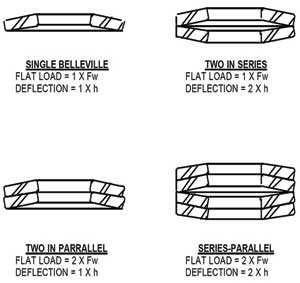
I have a spreadsheet and detailed instructions that I have been sending to anyone that asks about how to use Belleville washers. The instructions cover 3⁄8-, 7⁄16- and 1⁄2-inch diameter bolts, Zeitlin said. I don’t get any money out of this. I just want people to know that its more complex than going to McMaster-Carr and buying some washers. It is critical to tailor force and flex characteristics [of the Belleville washer stack] to the prop they’re using. In addition to supplying his spreadsheet and instructions, Zeitlin is a go-to source for information about where to obtain Belleville washers and aircraft quality bolts. His email address is [email protected].
Fixed-Pitch Metal and Wood Prop Installations
The torque specified for installation of a metal fixed-pitch prop on a Lycoming O-320 is 55 to 65 foot-pounds. The torque specified for a typical wood prop installation on the same engine is 23 to 27 foot-pounds. Maintaining proper bolt torque is the most important maintenance item for a wood propeller. The bolts pulling a wood prop into contact with the engine crankshaft flange must pull against a crushplate (aka faceplate) on the prop hub. This crushplate must have at least as much surface area as the crankshaft flange and must be sturdy enough to distribute the pulling pressure evenly, without distorting, to the prop hub area. As can be seen in the Belleville washer photos, Zeitlin’s installation consists of a sandwich with the bolt head, a large-area AN 970 washer, three stacks of Belleville washers and a second large-area washer aft (pusher installation) of a sturdy crushplate.
This Belleville washer solution has proven so successful at maintaining the required friction between the prop hub and engine flange that Jabiru has modified its recommended torque check interval from every 25 flight hours to once every year. There are two drawbacks, however: weight and cost. At a 2007 AirVenture presentation, Zeitlin cited a weight penalty of 1.75 to 2.5 pounds for his installation and a total parts cost of $120 for the required bolts and washers.
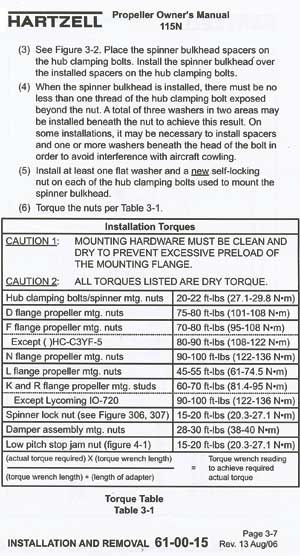
Torque Wrenches
Applying a specified torque to a bolt is easy, provided the wrench used is calibrated, the fastener is clean and dry (or lubricated in accordance with the manufacturers instructions), the residual torque of nuts is understood, determined and applied, and there is access to the bolt head.
The most common types of torque wrenches are the deflecting beam and click type. The deflecting beam type is inherently accurate as long as the pointer is free to move in relation to the scale, the pointer rests on zero when the wrench is not under load, and parallax error is understood. This wrench does not require calibration.
The click type has the advantage of rapid repeatability, because there is no need to visually refer to the position of the pointer in reference to a scale. This also makes the click type of wrench much faster when torquing a series of fasteners. The click wrench depends on internal springs, so it must be calibrated at regular intervals.
The fasteners on some props, especially constant-speed units, are tucked into corners of the hub and can only be torqued by attaching an adapter (extension) to the torque wrench. The length of the extension must then be added to the length of the torque wrench using the following formula: (actual torque required x torque wrench length)/(torque wrench length + length of adapter).
For example: If the extension is 6 inches long and the length of the torque wrench is 12 inches, what torque would need to be applied at the wrench to get a 70 foot-pound torque on the prop bolt? Applying the formula, we get: (70 x 12)/(12 + 6) = 840/18, which equals 46.6 foot-pounds.
Bolt Tightening, Installation Checks and Safetying
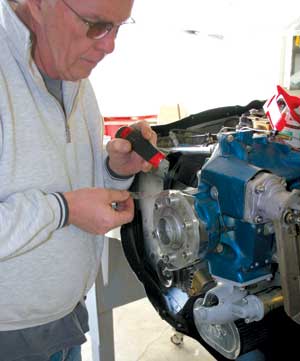
Wood prop bolts must be tightened gradually and evenly. Don’t start with one bolt and tighten in a clockwise or counter-clockwise circle-alternate the tightening sequence back and forth across the bolt pattern. For instance, if there are bolts at 12, 2, 4, 6, 8 and 10 clock positions, start at 12, then go to 6, then go to 10, then to 4, then to 8 and finish up at 2. Don’t go for the final torque in one step; three is better. This ensures that the propeller will contact the crankshaft flange squarely.
Propeller installations must be followed by a prop blade track check to see that the same point on each blade tracks within 1⁄8 inch as the blades are rotated past a fixed point. Some wood prop manufacturers suggest the installation of a thin shim. Tony Bingelis (author of Firewall Forward and Tony Bingelis on Engine Installations) suggested using paper between the wood hub and crankshaft flange to correct an out-of-track condition.
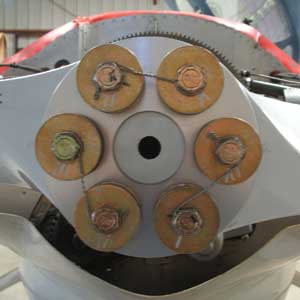
Safety-wiring is important, of course, but challenging with a constant-speed prop with the aforementioned bolt-head recess. You’re expected to run the safety wire through the roll pins, and its not easy. Traditionally, prop makers have called out for 0.040-inch stainless safety wire, but more recent manuals have specified 0.032-inch wire, which is definitely easier to work with. Sorry to say, there’s no one-size-fits-all method of safetying these bolts, but some patience and a set of thin needle-nose pliers will see you through. Some builders claim it’s easier to set the torque, then unwind the bolt enough to gain access to the roll pin, then retorque to spec, but the preferred method is to torque once and safety later.
Because propellers are subject to enormous forces during flight, for safety’s sake and for peace of mind, propeller installations must be done in accordance with the manufacturers instructions or airplane maintenance manual. Almost every manufacturer has a web site and somewhere on that site will be instructions for installing and torqueing the prop. Be sure to do it right the first time.

